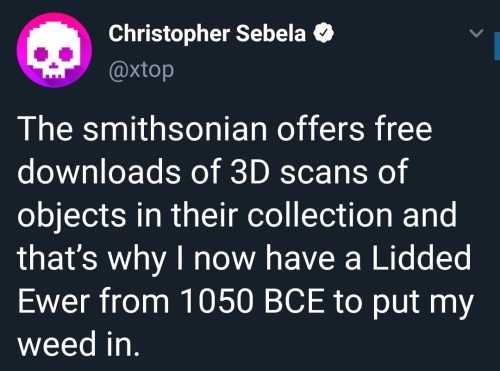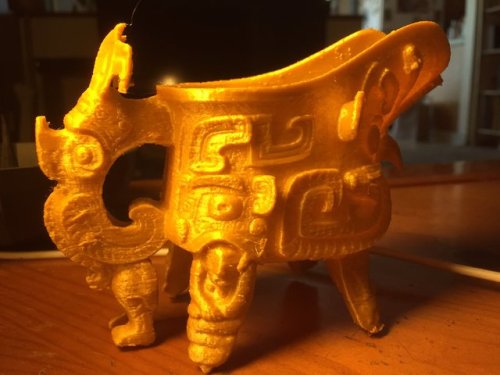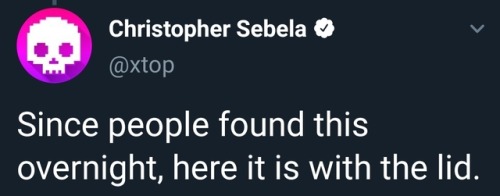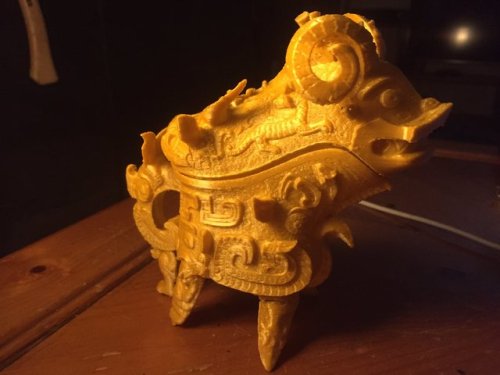Found This On Facebook But Reposting To SAVE A LIFE.

Found this on facebook but reposting to SAVE A LIFE.
Or at least some of y’all’s GPAs.
You’re welcome.
More Posts from Sunlightandbasil and Others
10 Ways to Observe the Moon for International Observe the Moon Night
On Saturday, October 5, we will host the 10th annual International Observe the Moon Night. One day each year, everyone on Earth is invited to observe and learn about the Moon together, and to celebrate the cultural and personal connections we all have with our nearest celestial neighbor! This year is particularly special as we mark the 50th anniversary of the Apollo 11 Moon landing while looking forward to our Artemis program, which will send the first woman and next man to the Moon.
There are many ways to participate in International Observe the Moon Night. You can attend an event, host your own or just look up! Here are 10 of our favorite ways to observe the Moon.
1. Look up

Image Credit: NASA’s Scientific Visualization Studio/Ernie Wright
The simplest way to observe the Moon is simply to look up. The Moon is the brightest object in our night sky, the second brightest in our daytime sky and can be seen from all around the world — from the remote and dark Atacama Desert in Chile to the brightly lit streets of Tokyo. On October 5, we have a first quarter Moon, which means that the near side of the Moon will be 50 percent illuminated. The first quarter Moon is a great phase for evening observing. Furthermore, the best lunar observing is typically along the Moon’s terminator (the line between night and day) where shadows are the longest, rather than at full Moon. See the Moon phase on October 5 or any other day of the year!
2. Peer through a telescope or binoculars

Image Credit: NASA/Molly Wasser
With some magnification help, you will be able to focus in on specific features on the Moon. In honor of this year’s 50th Anniversary of the Apollo 11 Moon Landing, see if you can find Mare Tranquillitatis (Sea of Tranquility)! Download our Moon maps for some guided observing on Saturday.
3. Photograph the Moon

Image Credit: NASA/GSFC/Arizona State University
Our Lunar Reconnaissance Orbiter (LRO) has taken more than 20 million images of the Moon, mapping it in stunning detail. You can see featured, captioned images on LRO’s camera website, like the crater seen above. And, of course, you can take your own photos from Earth. Check out our tips on photographing the Moon!
4. Relax on your couch

Image Credit: NASA’s Scientific Visualization Studio/Ernie Wright
Is it cloudy? Luckily, you can observe the Moon from the comfort of your own home. The Virtual Telescope Project will livestream the Moon from above the Roman skyline. Or, you can take and process your own lunar images with the MicroObservatory Robotic Telescopes. Would you prefer a movie night? There are many films that feature our nearest neighbor. Also, you can spend your evening with our lunar playlist on YouTube or this video gallery, learning about the Moon’s role in eclipses, looking at the Moon phases from the far side and seeing the latest science portrayed in super high resolution.
5. Touch the topography

Image Credit: NASA GSFC/Jacob Richardson
Observe the Moon with your hands! If you have access to a 3D printer, you can peruse our library of 3D models and lunar landscapes. This collection of Apollo resources features 3D models of the Apollo landing sites using topographic data from LRO and the SELENE mission. The 3D printed model you see above is of the Ina D volcanic landform.
6. Make and admire Moon art

Image Credit: LPI/Andy Shaner
Enjoy artwork of the Moon and create your own! For messy fun, lunar crater paintings demonstrate how the lunar surface changes due to frequent meteorite impacts.
7. Listen to the Moon
Image Credit: NASA Explorers: Apollo/System Sounds
Treat your ears this International Observe the Moon Night. Our audio series, NASA Explorers: Apollo features personal stories from the Apollo era to now, including yours! You can participate by recording and sharing your own experiences of Apollo with us. Learn some lunar science with the second season of our Gravity Assist podcast with NASA Chief Scientist, Jim Green. Make a playlist of Moon-themed songs. For inspiration, check out this list of lunar tunes. We also recommend LRO’s official music video, The Moon and More, featuring Javier Colon, season 1 winner of NBC’s “The Voice.” Or you can watch this video featuring “Clair de Lune,” by French composer Claude Debussy, over and over.
8. Take a virtual field trip

Image Credit: NASA/SSERVI
Plan a lunar hike with Moon Trek. Moon Trek is an interactive Moon map made using NASA data from our lunar spacecraft. Fly anywhere you’d like on the Moon, calculate the distance or the elevation of a mountain to plan your lunar hike, or layer attributes of the lunar surface and temperature. If you have a virtual reality headset, you can experience Moon Trek in 3D.
9. See the Moon through the eyes of a spacecraft

Image Credit: NASA/GSFC/MIT
Visible light is just one tool that we use to explore our universe. Our spacecraft contain many different types of instruments to analyze the Moon’s composition and environment. Review the Moon’s gravity field with data from the GRAIL spacecraft or decipher the maze of this slope map from the laser altimeter onboard LRO. This collection from LRO features images of the Moon’s temperature and topography. You can learn more about the different NASA missions to explore the Moon here.
10. Continue your observations throughout the year

Image Credit: NASA’s Scientific Visualization Studio/Ernie Wright
An important part of observing the Moon is to see how it changes over time. International Observe the Moon Night is the perfect time to start a Moon journal. See how the shape of the Moon changes over the course of a month, and keep track of where and what time it rises and sets. Observe the Moon all year long with these tools and techniques!
However you choose to celebrate International Observe the Moon Night, we want to hear about it! Register your participation and share your experiences on social media with #ObserveTheMoon or on our Facebook page. Happy observing!
Make sure to follow us on Tumblr for your regular dose of space: http://nasa.tumblr.com.
hobbies masterpost!
a really excellent way to reduce anxiety is to pick up a new hobby. find something you’re interested in, learn it, then use it as a healthy and productive way to cope.
learn to play guitar
learn how to make interactive stories with the free program Twine
learn how to make pixel art
learn another language
learn how to build a ship in a bottle
learn how to develop your own film
learn how to embroider
learn how to make chiptunes (8-bit music)
learn how to make origami (the art of paper folding)
learn how to make tumblr themes
learn how to make jewelry
learn how to make candy
learn how to make terrariums
learn how to make your own perfume
learn how to make your own tea
learn how to build birdhouses
learn how to read tarot cards
learn how to make zines
learn how to code
learn how to whittle (wood carving)
learn how to make candles
learn how to make clay figurines
learn how to knit scarves
learn how to become an amateur astronomer
learn some yoyo tricks
learn how to start a collection
learn how to start body building
learn how to edit wikipedia articles
learn how to decorate iphone cases
learn how to do freelance writing
learn how to make your own cards and
learn how to make your own envelopes
learn how to play the ukulele
learn how to make gifs
learn how to play chess
learn how to juggle
learn how to guerrilla garden
learn how to chart your family history
learn how to keep chickens
learn how to do yoga
learn how to do magic tricks
learn how to raise and breed butterflies
learn how to play dungeons & dragons
learn how to skateboard
learn how to do parkour
learn how to surf
learn how to arrange flowers
learn how to make stuffed animals
How do you (“how does one”) shop for a therapist?
Can you call up a therapist and be like “hi, I’m therapist shopping”? Can you schedule an appointment with a therapist and then be like “actually I have some questions and I want to spend part of this appointment talking about your practice and whether or not it is garbage?”? Are you expected to phone interview/screen your therapists if you are shopping around for a therapist?
If you’re seeing one therapist are you supposed to/not supposed to tell them if you start seeing another therapist? Is it possible to cheat on your therapist?
Free Online Language Courses

Here is a masterpost of MOOCs (massive open online courses) that are available, archived, or starting soon. I think they will help those that like to learn with a teacher or with videos. You can always check the audit course or no certificate option so that you can learn for free.
American Sign Language
ASL University
Sign Language Structure, Learning, and Change
Arabic
Arabic for Global Exchange (in the drop-down menu)
Intro to Arabic
Madinah Arabic
Moroccan Arabic
Arabe (taught in French)
Catalan
Intro to Catalan Language & Society
Intro to Catalan Sign Language
Chinese
Beginner
Basic Chinese I. II, III, IV , V
Basic Mandarin Chinese I & II
Beginner’s Chinese
Chinese for Beginners
Chinese Characters
Chinese for HSK 1
Chinese for HSK 2
Chinese for HSK 3 I & II
HSK Level 1
Mandarin Chinese
Mandarin Chinese for Business
More Chinese for Beginners
Start Talking Mandarin Chinese
UT Gateway to Chinese
Chino Básico (Taught in Spanish)
Intermediate
Chinese Stories
Intermediate Business Chinese
Intermediate Chinese Grammar
Dutch
Introduction to Dutch
English
Online Courses here
Resources Here
Faroese
Faroese Course
Finnish
A Taste of Finnish
Basic Finnish
Finnish for Immigrants
Finnish for Medical Professionals
French
Beginner
AP French Language and Culture
Basic French Skills
Beginner’s French: Food & Drink
Diploma in French
Elementary French I & II
Français Interactif
French in Action
French Language Studies I, II, III
French: Ouverture
Intermediate & Advanced
French: Le Quatorze Juillet
Passe Partout
La Cité des Sciences et de Industrie
Vivre en France - A2
Vivre en France - B1
Frisian
Introduction to Frisian (Taught in English)
Introduction to Frisian (Taught in Dutch)
German
Beginner
Beginner’s German: Food & Drink
Conversational German I, II, III, IV
Deutsch im Blick
Diploma in German
German at Work
Rundblick-Beginner’s German
Intermediate
German: Regionen Traditionen und Geschichte
Landschaftliche Vielfalt
Gwich’in
Introduction to Gwich’in Language
Hebrew
Biblical Hebrew
Know the Hebrew Alphabet
Teach Me Hebrew
Hindi
A Door into Hindi
Business Hindi
Virtual Hindi
Icelandic
Icelandic 1-5
Indonesian
Learn Indonesian
Irish
Introduction to Irish
Irish 101
Irish 102
Italian
Beginner
Beginner’s Italian: Food & Drink
Beginner’s Italian I
Introduction to Italian
Italian for Beginners 1 , 2, 3 , 4 , 5, 6
Intermediate & Advanced
AP Italian Language and Culture
Intermediate Italian I
Advanced Italian I
Letteratura italiana
Japanese
Genki
Japanese JOSHU
Japanese Pronunciation
Sing and Learn Japanese
Tufs JpLang
Kazakh
A1-B2 Kazakh (Taught in Russian)
Korean
Beginner
First Step Korean
How to Study Korean
Introduction to Korean
Learn to Speak Korean
Pathway to Spoken Korean
Intermediate
Intermediate Korean
Nepali
Beginner’s Conversation and Grammar
Norwegian
Introduction to Norwegian
Norwegian on the Web
Portuguese
Curso de Português para Estrangeiros
Pluralidades em Português Brasileiro
Russian
Beginner
Easy Accelerated Learning for Russian
Advanced
Reading Master and Margarita
Russian as an Instrument of Communication
Siberia: Russian for Foreigners
Spanish
Beginner
AP Spanish Language & Culture
Basic Spanish for English Speakers
Beginner’s Spanish: Food & Drink
Introduction to Spanish
Restaurants and Dining Out
Spanish for Beginners 1, 2, 3, 4, 5, 6
Spanish Vocabulary
Intermediate
Spanish: Ciudades con Historia
Spanish: Espacios Públicos
Advanced
Corrección, Estilo y Variaciones
Leer a Macondo
Spanish:Con Mis Propias Manos
Spanish: Perspectivas Porteñas
Swedish
Intro to Swedish
Swedish Made Easy 1, 2, & 3
Ukrainian
Read Ukrainian
Ukrainian Language for Beginners
Welsh
Beginner’s Welsh
Discovering Wales
Multiple Languages
Ancient Languages
More Language Learning Resources & Websites!
Last updated: April 1, 2018
no, listen, when I say I want to integrate more specific solarpunk stuff in my life, i don’t mean to ask for yet again new “aesthetic” clothes that now you have to buy or make to show your support of the movement (screw that i’m consuming enough as it is), or more posts about impossible house goals, or whatever, I’m asking you what my options to build a portable and eco friendly phone charger are, im asking you viable tiny-appartment edible plants growing tricks on a budget, im asking tips to slow down when my mind and society tell me im not fast enough, i don’t need more rich art nouveau amateurs aesthetics or pristine but cold venus project, okay, i know i should joins associations where I am tho i’m constantly on the move, thanks for that, just, you know, can we get a bit more practical ??? how do I hack my temporary flat into going off the grid for the time i’m here
How Often To Clean Your House (aka Being An Adult)





Sprinkles And Crafts: A Food, DIY And Lifestyle Blog.
BBC made a Planet Earth parody called Round Planet and it’s amazing
Imagine planet earth but the narration is ridiculous and hilarious








Hey Goblins, uh
Did you know, that you can make an AWESOME journal for your adventures ALL ON YOUR OWN from a cereal box and paper/scraps that you likely have at home/can get from friends or family/you may find around your environment?
They’re called Junk Journals and they’re my entire life.
Im gonna do my best to walk you through how to make one! First, get you a mini cereal box! I use boxes from those cool multipacks of cereal that you can find at Walmart!

And then cut it out so it looks like this! (I already had one cut, so I’m gonna use that)

That “nutrition facts” side is gone become your spine!
Next, find some paper to use to decorate your cover! I was lucky enough to be gifted a bunch of scrapbooking paper, so I’m gonna use that, but you can also use newspaper, paper from books/magazines, junk mail, napkins, paper towels (excellent texture), etc!

Go ahead and glue that paper to your box (to cover the cereal logo) and cut it out! It’ll look like this;


Next you need to find your pages! Again these can be anything! Junk mail, envelopes, receipts, food wrappers, magazine/book pages, scrapbook paper, computer paper, construction paper, ANYTHING. Just grab a whole bunch!
You’re gonna want to fold them in half and cut them to the size of one of the covers of your box, and layer other pages inside of it to make your signatures, like this!


Each signature should be about 7-10 pages. You don’t want them too thick, otherwise the inner pages start sticking out when folded in half. You’re gonna have a LOT of these signatures, as you wanna fill the area in the spine as best as possible. For this one I’m using 7 page signatures. Here’s a pic to show just how much paper you’ll need

Each of these signatures are 7 pages, 6 signatures have only filled about half of the spine, so I’ll need probably 6 more.
Next you gotta figure out how you want them in your journal. Personally, I like to sew them into the spine, but you can also keep them in the spine with rubber bands, so you can have removable pages! (Be weary that rubber bands may break over time! So you may want to always keep extra bands near it to replace in case one snaps. This is why I prefer sewing them in) I find it best to look up on YouTube how to sew in signatures, just because having someone walk you through it where you can see what they’re doing is easiest. If you can’t access YouTube, there’s plenty of text tutorials on how to sew in signatures online, or you can message me! I’m not gonna go too into detail, but here’s the jist;


Okay so I’m a forgetful gob and I hecken forgot to take pictures as I was going along kahshshshsh
But essentially, I sewed in the pattern similar to the one I drew. The dots are where the needle goes all the way through to the back. I also like to use rubber band as an extra mode of support but you can do one or the other. I also like both cuz I can tuck stuff in em between the pages. Since I didn’t take more pictures; I’d really recommend looking up a how-to on YouTube or w/e if my badly drawn diagram isn’t clear enough (heh sorry about that)
Next, I glue fabric to the spine. It spruces it up quite a lot and holds the rubber bands in place, plus it give more support to the spine since there’s gonna be a lot of strain on it.
Only 10 photos per post, so I gotta post this and reblog it with the rest.
-
 timeonthepond liked this · 4 days ago
timeonthepond liked this · 4 days ago -
 levon76 reblogged this · 4 days ago
levon76 reblogged this · 4 days ago -
 levon76 liked this · 4 days ago
levon76 liked this · 4 days ago -
 adrienschatt liked this · 4 days ago
adrienschatt liked this · 4 days ago -
 the-lady-bryan reblogged this · 4 days ago
the-lady-bryan reblogged this · 4 days ago -
 the-lady-bryan liked this · 4 days ago
the-lady-bryan liked this · 4 days ago -
 tinfoilscribbles reblogged this · 4 days ago
tinfoilscribbles reblogged this · 4 days ago -
 tinfoilstork reblogged this · 4 days ago
tinfoilstork reblogged this · 4 days ago -
 thisissirius liked this · 4 days ago
thisissirius liked this · 4 days ago -
 technologythings reblogged this · 5 days ago
technologythings reblogged this · 5 days ago -
 technologythings reblogged this · 5 days ago
technologythings reblogged this · 5 days ago -
 amargo-lex liked this · 6 days ago
amargo-lex liked this · 6 days ago -
 blueandgreeneyes reblogged this · 6 days ago
blueandgreeneyes reblogged this · 6 days ago -
 valakiir reblogged this · 6 days ago
valakiir reblogged this · 6 days ago -
 catgirlthecrazy reblogged this · 6 days ago
catgirlthecrazy reblogged this · 6 days ago -
 insertsomthinawesome liked this · 1 week ago
insertsomthinawesome liked this · 1 week ago -
 shadow-pixelle reblogged this · 1 week ago
shadow-pixelle reblogged this · 1 week ago -
 nightworktobegin reblogged this · 1 week ago
nightworktobegin reblogged this · 1 week ago -
 waffy2 reblogged this · 1 week ago
waffy2 reblogged this · 1 week ago -
 waffy2 liked this · 1 week ago
waffy2 liked this · 1 week ago -
 pupslimes liked this · 1 week ago
pupslimes liked this · 1 week ago -
 naminethewitch reblogged this · 1 week ago
naminethewitch reblogged this · 1 week ago -
 starshineandbooks liked this · 1 week ago
starshineandbooks liked this · 1 week ago -
 pulchrasilva reblogged this · 1 week ago
pulchrasilva reblogged this · 1 week ago -
 autistic-lizard liked this · 1 week ago
autistic-lizard liked this · 1 week ago -
 aintnoloveintheheatofthesun liked this · 1 week ago
aintnoloveintheheatofthesun liked this · 1 week ago -
 humblebumblebooks liked this · 1 week ago
humblebumblebooks liked this · 1 week ago -
 blurringmysoul liked this · 1 week ago
blurringmysoul liked this · 1 week ago -
 dreamymorningcoffeeworld liked this · 1 week ago
dreamymorningcoffeeworld liked this · 1 week ago -
 konxhk liked this · 1 week ago
konxhk liked this · 1 week ago -
 graveyardsleeper reblogged this · 1 week ago
graveyardsleeper reblogged this · 1 week ago -
 graveyardsleeper liked this · 1 week ago
graveyardsleeper liked this · 1 week ago -
 hangover1 liked this · 1 week ago
hangover1 liked this · 1 week ago -
 pixel-mess liked this · 1 week ago
pixel-mess liked this · 1 week ago -
 thestralsofspinnersend liked this · 1 week ago
thestralsofspinnersend liked this · 1 week ago -
 raskoln1kovsaxe liked this · 1 week ago
raskoln1kovsaxe liked this · 1 week ago -
 aggggghhh liked this · 1 week ago
aggggghhh liked this · 1 week ago -
 im-a-fucking-dumbass liked this · 1 week ago
im-a-fucking-dumbass liked this · 1 week ago -
 ranpo-beloved reblogged this · 1 week ago
ranpo-beloved reblogged this · 1 week ago -
 put-me-on-a-hitlist liked this · 1 week ago
put-me-on-a-hitlist liked this · 1 week ago -
 toastedjam reblogged this · 1 week ago
toastedjam reblogged this · 1 week ago -
 toastedjam liked this · 1 week ago
toastedjam liked this · 1 week ago -
 wyndig0s-blog liked this · 1 week ago
wyndig0s-blog liked this · 1 week ago -
 lanatriggs liked this · 1 week ago
lanatriggs liked this · 1 week ago -
 void-ghost liked this · 1 week ago
void-ghost liked this · 1 week ago -
 internet-grab-my-tumblr reblogged this · 1 week ago
internet-grab-my-tumblr reblogged this · 1 week ago -
 nineturtlestrenchcoat reblogged this · 1 week ago
nineturtlestrenchcoat reblogged this · 1 week ago -
 nineturtlestrenchcoat liked this · 1 week ago
nineturtlestrenchcoat liked this · 1 week ago -
 uhhlifeig reblogged this · 1 week ago
uhhlifeig reblogged this · 1 week ago -
 uhhlifeig liked this · 1 week ago
uhhlifeig liked this · 1 week ago




